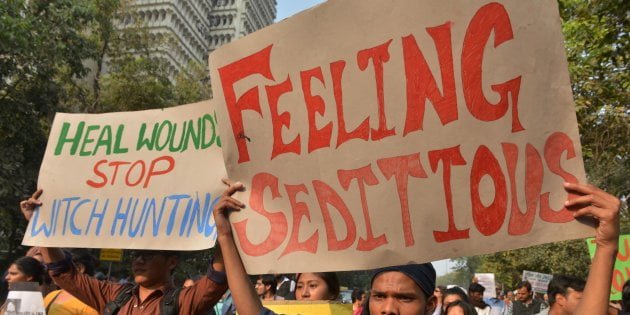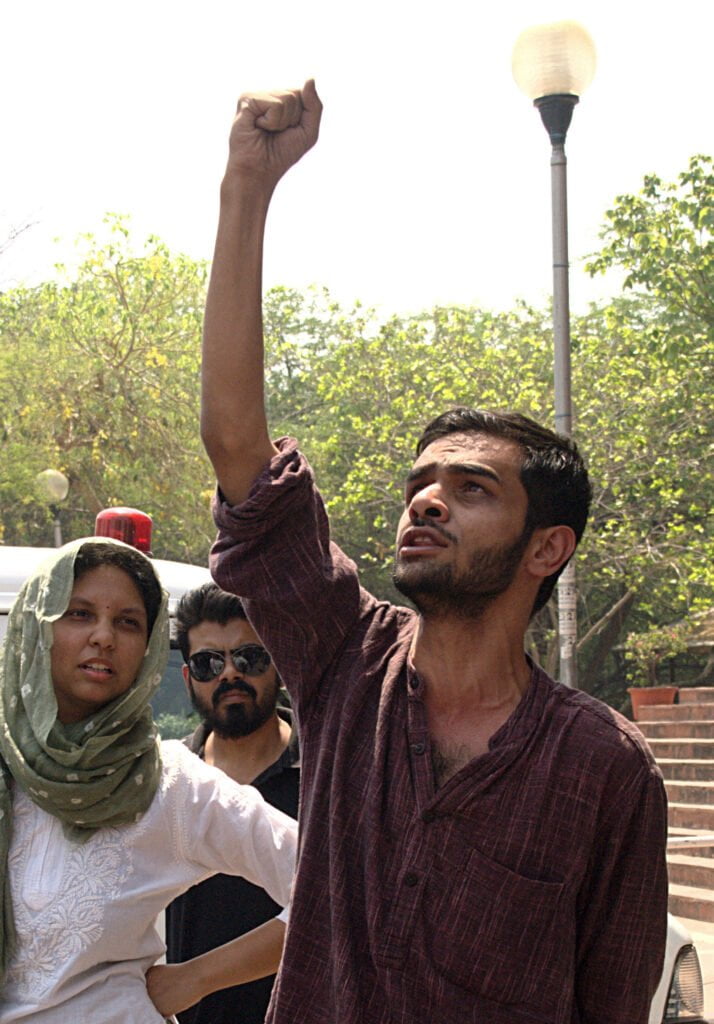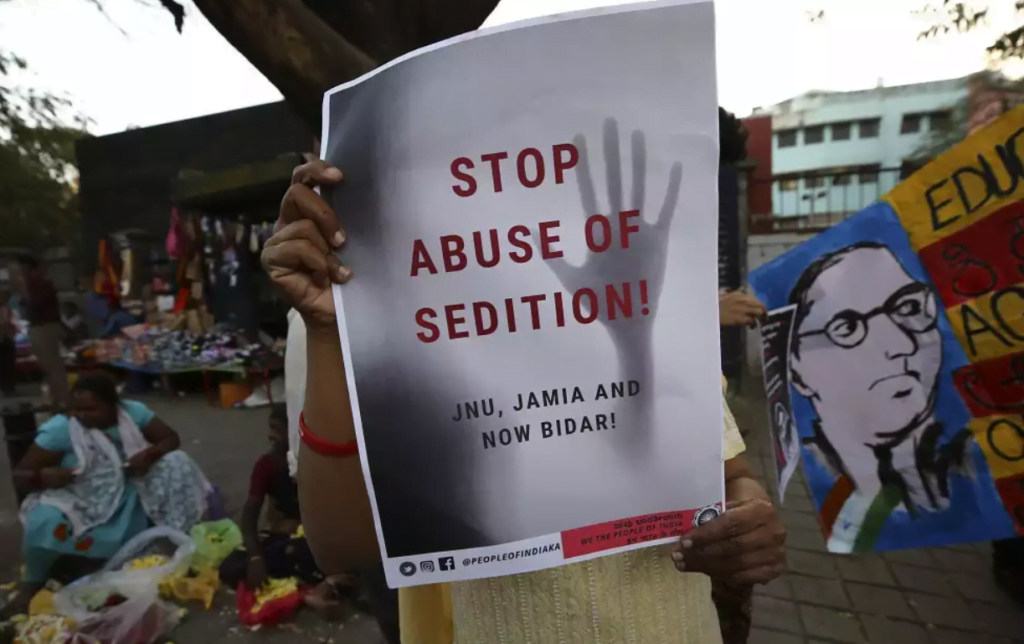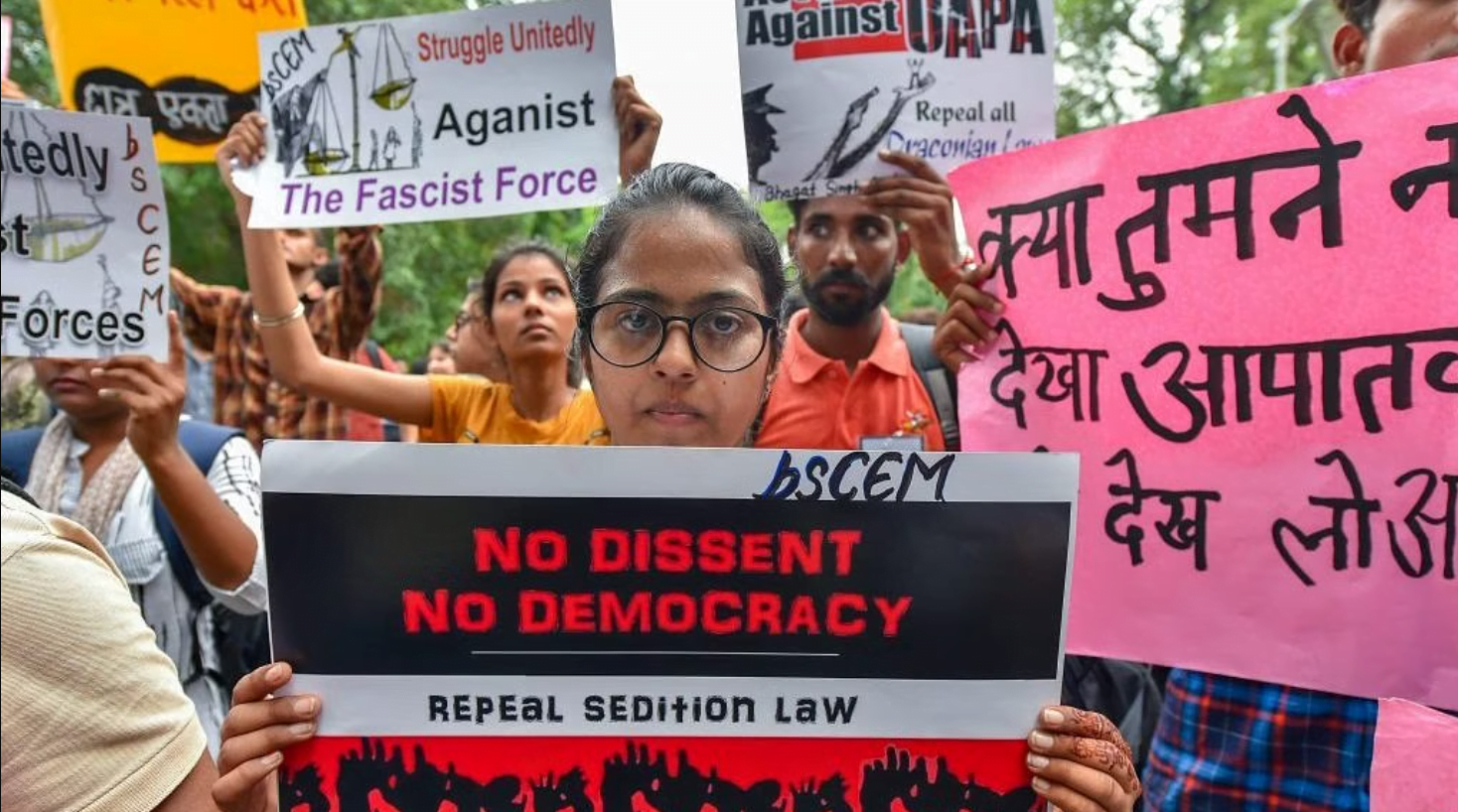In June 1897, Poona was ravaged by a severe epidemic of the bubonic plague. About half the city’s population was killed. The Bombay Government authorities were compelled to implement stringent measures to tackle the situation. British soldiers were tasked with conducting house-to-house searches to forcibly uncover and quarantine any concealed instances of the plague.
Dissatisfied with how the plague was being handled by the authorities, Lokmanya Bal Gangadhar Tilak published some articles in his newspaper Kesari due to which the British government charged him with the first high-profile case of what would come to be known as the sedition laws.
More recently, in 2020, JNU student activist Umar Khalid was arrested by the Delhi Police under the UAPA (Unlawful Activities Prevention Act) for allegedly delivering incendiary speeches during the visit of the President of the United States of America, Donald Trump. The Delhi Police claimed that his speeches may have encouraged and aided the 2020 Delhi Riots in the aftermath of the anti-CAA protests. Khalid is still in prison and has withdrawn his plea for bail as of February 2024. In a letter to The Wire, Khalid writes:
“Lots of people far more privileged than me who were together in this fight against fascism, in the movement against CAA-NRC/NPR, today choose to remain silent when I am singled out for these lies. It makes you feel unwanted. It makes you feel a stranger in your own land.”
The Sedition laws in all their draconian glory have ruined lives and been used and abused as a tool to curb dissent and silence voices that those in power would much rather not hear. In nearly two centuries of the reign of this law, it has been used to stifle political opposition, persecute activists, and other voices of dissent, and quash freedom of expression. In its very essence, the Sedition law is contradictory to the values of the Indian Constitution.
About the Sedition Law
According to the Indian Penal Code if a person, by means of their spoken or written words or signs or visible representation, excites contempt, hatred, or dissaffection towards the government or the country then they are liable to be booked under sedition. If convicted, the person is subject to life imprisonment.

The Sedition Law was originally drafted in 1837 and Section 124A was inserted in 1870 to address the Wahabi Movement. It has undergone several amendments since its inception and has withstood numerous efforts to abolish it. Its most notable individuals charged under it are Bal Gangadhar Tilak, Mohandas Karamchand Gandhi, Arundhati Roy, and Hardik Patel.
First introduced by the British in India, the British government in the UK has since repealed it in 2009 but India continues to employ it for reasons best known to those in power. India has felt the need to preserve this law for years after the UK abolished it even though it is a relic of the country’s colonial past and overtly undemocratic in its workings. In May 2022, the Supreme Court of India placed the law on hold for review but the UAPA continues to do its dirty work for it.
The last ten years
Swara Bhaskar talks about how sedition charges these days are handed out like prasad (communion food). Two of the most notable cases in the last decade have been those of Kanhaiya Kumar and Disha Ravi.

In 2016, Kanhaiya Kumar, another JNU student activist, along with several others was arrested for allegedly raising anti-India slogans at an event organised on the death anniversary of Afzal Guru. Kumar however denied raising any slogans and further evidence has been found that he did not in fact raise any anti-India slogans after the doctored recordings were tested against 40 video clips.
Despite his innocence, even after he was released from prison, Kumar encountered death threats and a bounty of Rs. 5 Lakhs was offered by a member of the BJP Youth Wing to anyone willing to cut his tongue off. Kumar and his comrades have since been referred to as “anti-national” on several occasions.
Disha Ravi, a young climate change activist, was arrested in connection with the farmers’ protests of 2021. A digital toolkit posted by Greta Thunberg meant to enable awareness of the issues that the farmers were protesting against and means to support the farmers based on the reader’s discretion. An FIR was lodged against the creators of the toolkit and Disha Ravi was apprehended on that basis since the police believed that the toolkit contained links to pro-Khalistani websites, hence attempting to reduce the farmers’ protests as a sectarian religious movement since many of the protesting farmers were Sikhs.
In the past many years, the number of sedition cases has been steadily increasing always reaching their peak during election years. Since the BJP took office in 2014 and 2019, more than 500 instances of sedition have been filed. Compared to the annual average between 2010 and 2014 under the UPA II administration, there has been a 28 per cent rise in the number of sedition charges filed annually between 2014 and 2020, during Modi’s term in office.
People have been charged with sedition for the most frivolous of reasons including but not limited to “celebratory” messages on Pakistan’s victory in the T20 cricket match. In the 816 sedition cases since 2010, around 11,000 persons have been accused; of these, 65 per cent were charged following the election of the Modi government in 2014. 95 per cent of the 405 Indians who have been charged with sedition for criticising governments and officials in the past ten years have been charged after 2014. Out of these, 144 were charged with making words that were “derogatory” or “critical” of Uttar Pradesh Chief Minister Yogi Adityanath, and 149 were accused of criticising Modi.
The sedition law has low conviction rates but the Kafkaesque bureaucratic arrangement and waiting for the axe to drop is enough to silence voices raising important concerns that are not favourable to the government.
Following the 2019 Pulwama attack incident, 27 complaints were made against 44 individuals, 26 of whom were located in states governed by the Bharatiya Janata Party (BJP), for allegedly making “anti-national” posts on social media and for “pro-Pakistan” slogans. The government filed 25 sedition lawsuits against 3,754 people during the anti-CAA protests; Of the 25, twenty-two were in states where the BJP is in power.

The sedition law has low conviction rates but the Kafkaesque bureaucratic arrangement and waiting for the axe to drop is enough to silence voices raising important concerns that are not favourable to the government. Its only use is as an instrument of convenience by the people in power to draw attention away from valid critiques of their actions or policies.
In a democratic nation like India is supposed to be, freedom of expression is not supposed to come with conditional clauses that delimit it to this extent, so much so that any action critiquing the government is met with the threat of prosecution.
With its colonial history and its record of attempting to silence people who were touted as national heroes in the past, the sedition law seems like a surefire way to canonise a protest and attribute heroism to those charged under it, and the government’s obsession with it does not bode well for its supposed devotion to the democratic spirit of the nation.
About the author(s)
Adrita Bhattacharya is a Computer Science graduate from Vellore Institute of Technology and is currently pursuing a degree in English and Cultural Studies at Christ University. She has a keen interest in Linguistics, Gender Studies, and Digital Humanities.





